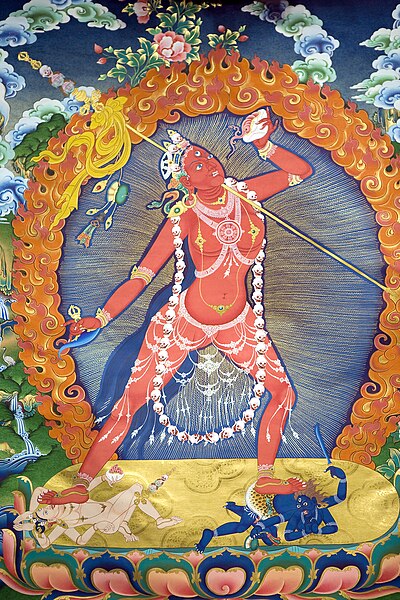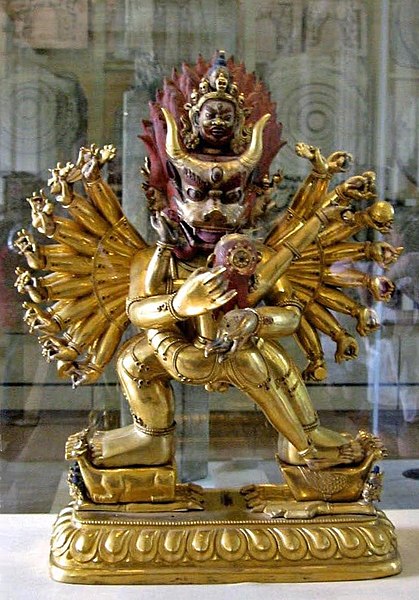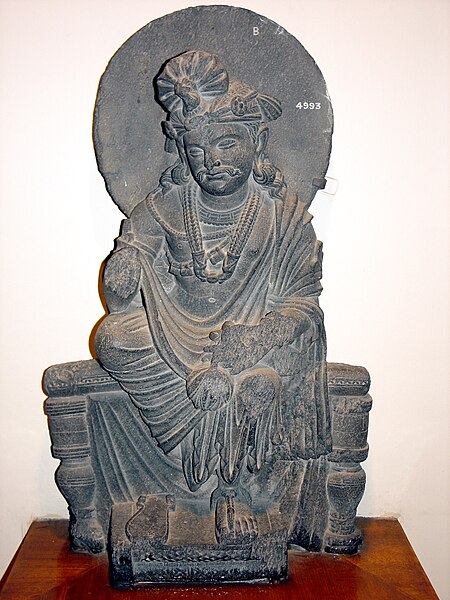In Buddhism, wrathful deities or fierce deities are the fierce, wrathful or forceful forms of enlightened Buddhas, Bodhisattvas or Devas ; normally the same figure has other, peaceful, aspects as well. Because of their power to destroy the obstacles to enlightenment, they are also termed krodha-vighnantaka, "Wrathful onlookers on destroying obstacles". Wrathful deities are a notable feature of the iconography of Mahayana and Vajrayana Buddhism, especially in Tibetan art. These types of deities first appeared in India during the late 6th century, with its main source being the Yaksha imagery, and became a central feature of Indian Tantric Buddhism by the late 10th or early 11th century.
Mahakala statue, holding a flaying knife (kartika) and skullcup (kapala)
Vajrayogini, a semi-wrathful dakini who is also known as sarvabuddhaḍākiṇī, the all-buddha Dakini.
Yamantaka, also known as Vajrabhairava.
Ekajati, also known as Blue Tara or Ugra Tara.
Mahāyāna is a term for a broad group of Buddhist traditions, texts, philosophies, and practices developed in ancient India. It is considered one of the three main existing branches of Buddhism, the others being Theravāda and Vajrayāna. Mahāyāna accepts the main scriptures and teachings of early Buddhism but also recognizes various doctrines and texts that are not accepted by Theravada Buddhism as original. These include the Mahāyāna sūtras and their emphasis on the bodhisattva path and Prajñāpāramitā. Vajrayāna or Mantra traditions are a subset of Mahāyāna which makes use of numerous tantric methods Vajrayānists consider to help achieve Buddhahood.
An illustration in a manuscript of the Aṣṭasāhasrikā Prajñāpāramitā Sūtra from Nalanda, depicting the bodhisattva Maitreya, an important figure in Mahāyāna
The Five Tathāgatas in Shishoin Temple (Tokyo). A unique feature of Mahāyāna is the belief that there are multiple Buddhas which are currently teaching the Dharma
Mahāyāna Buddhist triad, including Bodhisattva Maitreya, the Buddha, and Bodhisattva Avalokiteśvara. 2nd–3rd century CE, Gandhāra
Seated Avalokiteshvara bodhisattva. Gandharan, from Loriyan Tangai. Kushan period, 1st – 3rd century CE. Indian Museum, Calcutta








